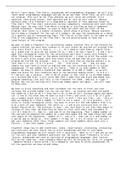Samenvatting
Summary Lecture 1: Intro to Programming & Flowcharts
- Vak
- Instelling
We want to make a flowchart for calculating simple interest This is the formula for simple interest You must have studied it in your school We started our program from this start block I do n't know p , r , t , so I need to take them as inputs first So I asked user to give me the values for p, r an...
[Meer zien]




